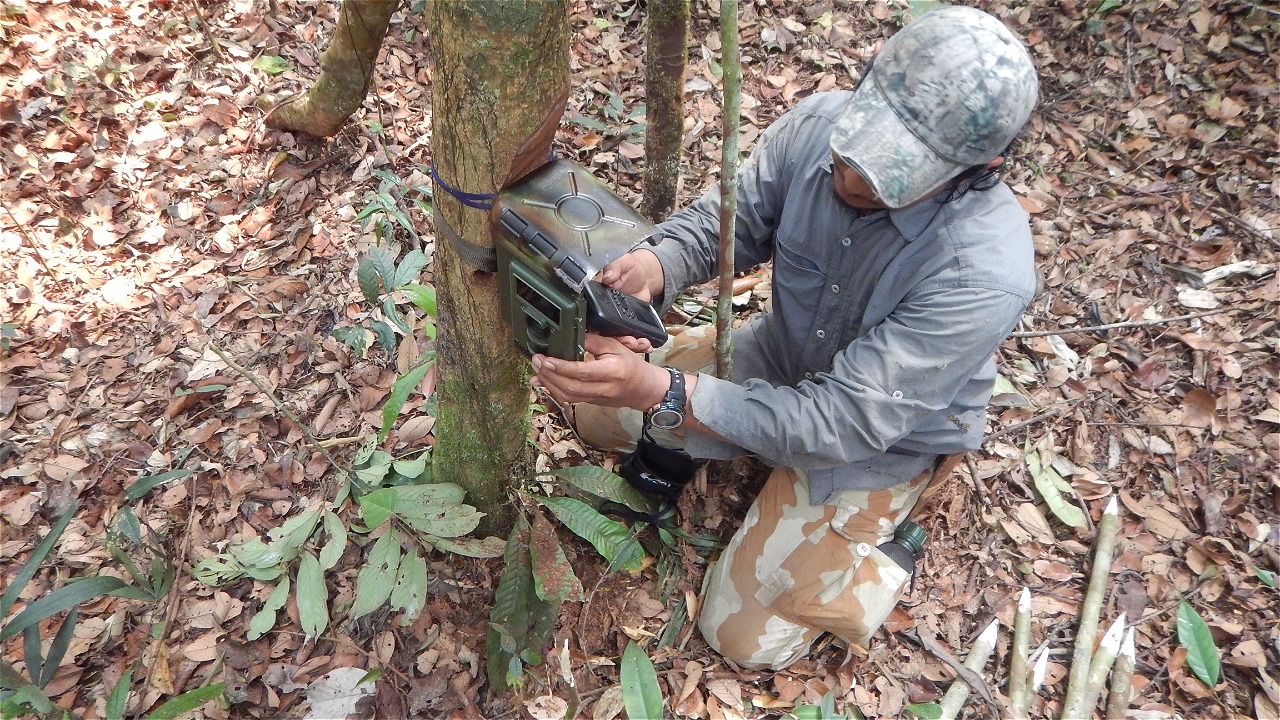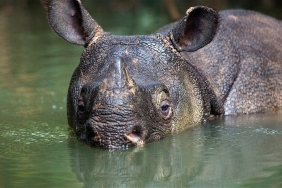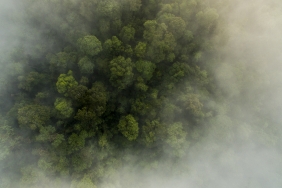EXPLORING THE BIODIVERSITY OF THE RIMBANG BALING LANDSCAPE WITH CAMERA TRAP RESEARCH
By: Febri Anggriawan Widodo and supported by WWF Indonesia Sumatran Tiger Research Team
Camera trap is an optical device with working principle similar to CCTV or Close Circuite Television. You must know CCTV right? Yes, an optical device that is able to monitor its surroundings 24 hours a week automatically. Well, similarly to a camera trapper, it can operate automatically 24/7 in the forest to monitor animals that pass in front of it. This tool is very useful for biodiversity conservation efforts such as being able to validate the presence of animals for monitoring purposes.
Especially for the conservation of biodiversity in which animals are one of the components, researchers are expected to be greatly helped by the presence of camera traps. This tool is an advancement in the field of wildlife research because researchers do not need to be invasive to the target animals. Basically, this technology was created due to the difficulty of visually observing the presence of wildlife. The camera trap is a bionic (a combination of biological and electronic aspects) which is able to combine biological activities with the latest technology.
WWF - Indonesia, an organization engaged in environmental conservation including wildlife and their habitats, has long used this useful tool. In fact, the organization initiated the manufacture of local camera traps by holding a camera trap design competition in October 2015. Currently, the original camera trap made by the nation's children is in the process of finalizing the product which is expected to be widely used for wildlife and habitat conservation efforts.< br />
For the central Sumatra program, WWF - Indonesia has been using camera traps since 2004 for wildlife research purposes. Wildlife research is a fundamental activity to provide direction for conservation efforts that can accommodate the needs of many parties so that the hope is to create a harmonious life between humans and wildlife. The main objective is to monitor tigers and their habitat with one of the targets being the Rimbang Baling landscape as one of the Tiger Conservation Landscape (TCL) on the island of Sumatra. We have been conducting camera trap-based wildlife monitoring and inventory in this landscape since 2006 until now, and 64 camera traps are still active in the field. In general, we have conducted observation efforts for 3,262 active camera trap working days with a total of 104 installation points. Camera trapping has proven that Rimbang Baling is an important landscape in terms of protecting forest ecosystems and their links to food chains and life support systems that have far-reaching impacts on local and regional social life. The use of camera traps in Rimbang Baling is very helpful for research and monitoring of wildlife.
Sumatran tiger
Rimbang Baling is an important habitat for the Sumatran tiger (Panthera tigris sumatrae), one of the world's six remaining tiger cubs. Its current status according to the IUCN, an international organization for nature conservation, is categorized as "critically endangered" or one stage before extinction in nature. The cub is also the only tiger left in the Indonesian archipelago apart from the Javanese tiger (Panthera tigris sondaica) and the Bali tiger (Panthera tigris balica) which preceded it to extinction so we need to preserve these charismatic animals. Based on the results of camera traps placed in Rimbang Baling, tigers have been recorded as still existing. However, the threat to them is also very high. This is proven by the discovery of dozens of tiger snares every year. In tiger conservation efforts, the use of camera traps is very useful for the identification of different individuals for the purpose of monitoring the survival of the species in nature.
Five species of wild cats
Camera trapping in Rimbang Baling proved the importance of the landscape with the discovery of five of Sumatra's six wild cat species. These species are the Sumatran tiger (Panthera tigris sumatrae), Sunda clouded leopard (Neofelis diardi), golden cat (Pardofelis temminckii), rock cat (Pardofelis marmorata) and jungle cat (Prionailurus bengalensis). In central Sumatra, not all forest areas are inhabited by all five cat species and this proves that Rimbang Baling is worth protecting.
Sumatran forest goat
The Sumatran wild goat (Capricornis sumatraensis) is the only land mammal of the genus Caprinae in Sumatra and even Indonesia. At Rimbang Baling, our camera traps successfully documented this vulnerable species according to the IUCN.





